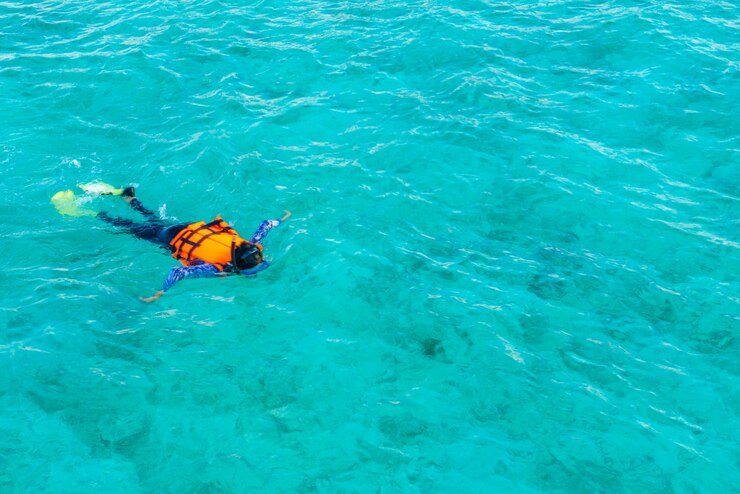Hiking is one of the most fulfilling ways to connect with the great outdoors, offering a unique blend of adventure, exercise, and tranquility. Whether you’re scaling rugged mountain trails, wandering through lush forests, or walking along serene coastal paths, hiking allows you to escape the noise of daily life and immerse yourself in nature. More than just a physical activity, hiking can improve mental well-being, boost creativity, and foster a deeper appreciation for the environment. Whether you’re a seasoned trekker or new to outdoor exploration, this guide will help you embrace the joys of hiking and make the most of your next adventure.
Why Hiking Matters
Hiking isn’t just a pastime; it’s a lifestyle that encourages physical fitness, mental clarity, and environmental awareness.
Benefits of Hiking
- Physical Health: Hiking provides a full-body workout, improving cardiovascular health, strengthening muscles, and aiding in weight management.
- Mental Health: Time in nature reduces stress, anxiety, and depression, boosting mood and overall mental clarity.
- Connection to Nature: Hiking fosters a greater appreciation for the environment, inspiring efforts to preserve natural spaces.
- Social Bonding: Group hikes offer opportunities to connect with others and build lasting relationships.
Types of Hiking Adventures
There’s a hiking experience for everyone, from beginners seeking gentle trails to experienced adventurers craving a challenge.
1. Day Hikes
Day hikes are short trips that can be completed in a single day. They are ideal for beginners and those with limited time.
- Examples:
- A walk through a local nature reserve.
- Exploring trails at a nearby national park.
2. Backpacking
Backpacking involves overnight hikes where you carry camping gear. This type of hiking requires planning and preparation but offers an immersive outdoor experience.
- Examples:
- Appalachian Trail in the U.S.
- Great Ocean Walk in Australia.
3. Summit Hikes
For those seeking a challenge, summit hikes involve climbing to the top of a peak. These hikes often reward your efforts with breathtaking panoramic views.
- Examples:
- Mount Kilimanjaro in Tanzania.
- Half Dome in Yosemite National Park.
4. Long-Distance Hikes
These are multi-day or even multi-week treks that require endurance and careful planning.
- Examples:
- Camino de Santiago in Spain.
- Pacific Crest Trail in the U.S.
Essential Gear for Hiking
Packing the right gear ensures a safe and enjoyable hike.
| Category | Items |
|---|---|
| Clothing | Moisture-wicking shirt, hiking pants, weather-appropriate layers, waterproof jacket. |
| Footwear | Sturdy hiking boots, wool socks. |
| Navigation | Map, compass, or GPS device. |
| Safety | First-aid kit, whistle, multi-tool. |
| Hydration & Food | Water bottles or hydration packs, energy snacks. |
| Backpack | Lightweight backpack with adjustable straps. |
| Extras | Sunscreen, insect repellent, trekking poles. |
Tips for a Successful Hiking Experience
1. Plan Ahead
- Research the Trail: Know the trail’s length, difficulty, and terrain.
- Check the Weather: Avoid hiking in extreme conditions.
- Obtain Permits: Some trails require permits or fees.
2. Dress for Success
Layering is key for comfort and safety. Start with a moisture-wicking base layer, add an insulating layer for warmth, and finish with a waterproof outer layer.
3. Stay Hydrated and Fueled
Bring plenty of water and pack high-energy snacks like trail mix, granola bars, or fruit. For longer hikes, consider lightweight meals that are easy to prepare.
4. Practice Leave No Trace Principles
Respect nature by minimizing your impact.
- Carry Out Trash: Leave no litter behind.
- Stay on Trails: Avoid damaging vegetation by sticking to marked paths.
- Respect Wildlife: Observe animals from a distance.
5. Know Your Limits
Choose trails that match your fitness level and experience. Start with easier hikes and gradually progress to more challenging ones.
Top Hiking Trails Around the World
1. Torres del Paine (Chile)
- Highlights: Dramatic mountains, glaciers, and turquoise lakes.
- Best Time to Visit: November to March.
2. Cinque Terre (Italy)
- Highlights: Coastal trails linking picturesque villages.
- Best Time to Visit: Spring and fall.
3. Mount Fuji (Japan)
- Highlights: A cultural and spiritual experience with stunning views.
- Best Time to Visit: July to September.
4. Zion Narrows (USA)
- Highlights: A river hike through narrow canyon walls.
- Best Time to Visit: Summer and early fall.
5. Table Mountain (South Africa)
- Highlights: Panoramic views of Cape Town and the Atlantic Ocean.
- Best Time to Visit: Year-round, but mornings are best.
Hiking Safety Tips
- Inform Someone of Your Plans: Always let someone know your itinerary and expected return time.
- Carry a First-Aid Kit: Be prepared for minor injuries.
- Stay Aware of Wildlife: Know how to safely handle encounters with animals.
- Know Emergency Procedures: Familiarize yourself with the trail’s emergency contact points and procedures.
Health Benefits of Hiking
1. Physical Fitness
Hiking strengthens muscles, improves cardiovascular health, and enhances flexibility.
2. Mental Well-being
Spending time in nature reduces stress hormones and increases feelings of happiness and relaxation.
3. Social Connection
Group hikes can foster relationships and build teamwork skills.
Conclusion: Embrace the Trail
Hiking is more than just an outdoor activity—it’s an opportunity to discover the world around you and reconnect with yourself. From serene forest trails to challenging mountain ascents, hiking offers experiences that inspire, rejuvenate, and transform.
So, lace up your boots, pack your backpack, and set out on an adventure that will enrich your body, mind, and soul. The trail is waiting—are you ready to explore?
